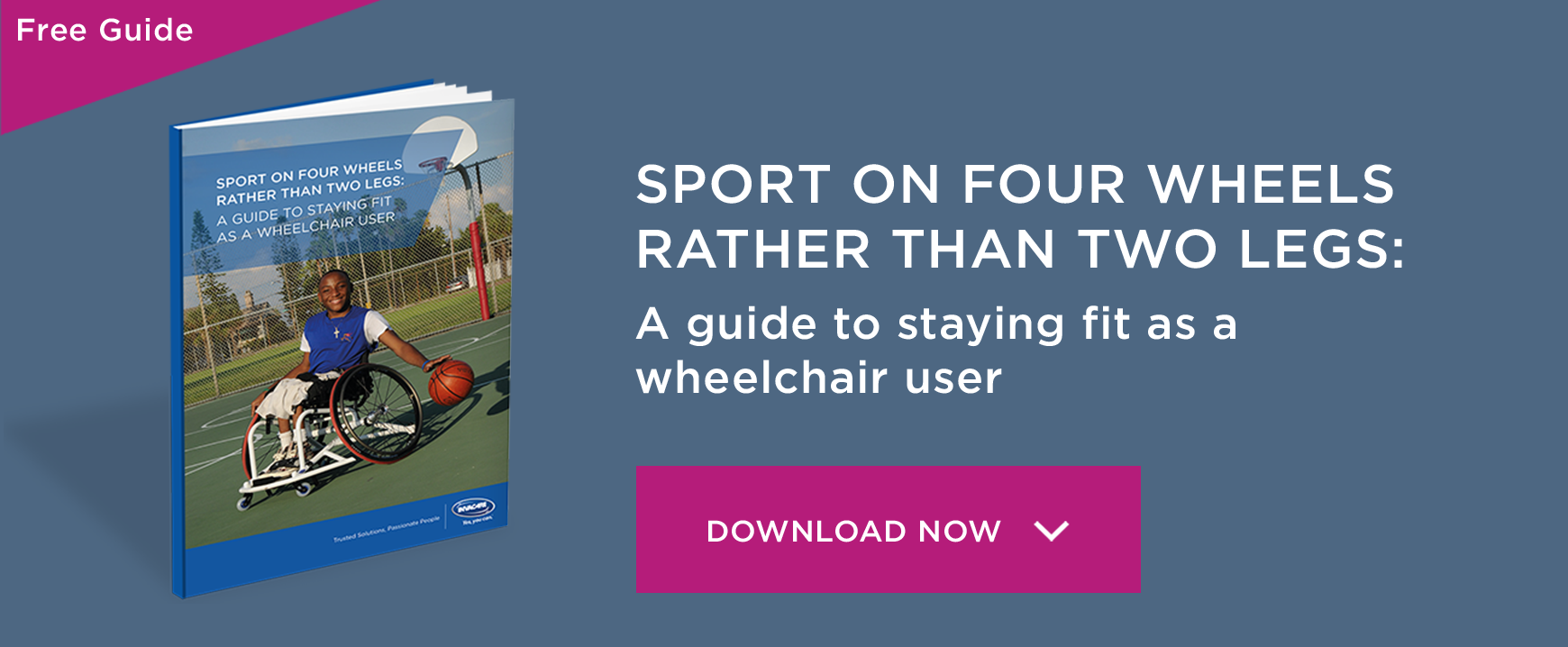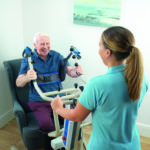How Will Your Sports Wheelchair Support Health & Well-Being?

What is a sports wheelchair?
A sports wheelchair is a self-propelled wheelchair, much like its everyday use relative, but with some specific differences. In the past they tended to be non-folding in order to be stronger and better balanced during tight turns and impacts, but they are now often made of light-weight, aero-grade materials which not just facilitate speed, acceleration and maneuverability, but they also allow for these modern sports wheelchair to be foldable.
Besides the unique qualities of the materials used, and some other, more or less visible design differences, the thing that sets a great majority of sports wheelchairs apart from standard wheelchairs are their wheels. The wheels of sports wheelchair are often differently configured to that of a standard self-propelled chair, their rear wheels are angled to allow for better stability, while the front wheels are usually smaller than those of standard wheelchair, in order to provide additional agility.
There are a number of different types of sports wheelchair, however. As you can see, some of them even don’t have wheels. And, indeed, most popular wheelchair sports, such as basketball and tennis, have their own specifically designed chairs to support the specific skills and demands their sport requires.
For example, sports wheelchairs designed for basketball are likely to have a front bumper of some sort to protect the user during collisions, and they will likely have an anti-tip wheel in the back, so that the player can lean backwards more freely to generate shot power and have centre of gravity alteration options. The tennis option will offer agility and control with a wider frame and front castor placement to support lateral and forward leaning.
One other type of common sports equipment available to wheelchair users is a hand bike. Although it’s not always classified as a sports wheelchair, it still provides wheelchair users with excellent options for road racing, maximising both speed and stability.
What does health & well-being really mean?
For a long time now, the term ‘health’ has been synonymous with the lack of physical illness, and it’s been said that the more you exercise and the fitter you are, the less likely you are to have cardiac, respiratory, neurological, or any other kinds of health issues, for that matter. This has been scientifically supported with evidence conclusively linking diet, exercise and lifestyle to physical health.
However, one thing is being overlooked too often – it is important that we not only consider the impact of sports on our physical health, but also on our psychological well-being.
NHS Choices defines mental health and well-being as ‘a feeling of contentment, enjoyment, engagement in society… with self-esteem also a factor’. On the other hand, the World Health Organization states that mental health includes ‘subjective well-being, perceived self-efficacy, autonomy, competence, intergenerational dependence, and self-actualization of one’s intellectual and emotional potential, among others’.
Clearly, then, being active – which, for people with disabilities, often means using a sports wheelchair – has a tremendous effect on mental well-being, as it promotes many of the aforementioned things, like autonomy, self-actualization, enjoyment and engagement in society.
Furthermore, research suggests that engagement in physical activity and the subsequent increase of certain chemical reactions in the brain improves mood, reducing risks of depression and anxiety; it also improves concentration, sleep hygiene and, what’s probably most important, it has a beneficial effect on self-esteem.
We mustn’t forget the social factor of physical activity and sports, either, and the effect social environment and interaction can have on our mental and physical health. After all, every person is a social being, and getting out and staying active is probably the best way of staying social. To cite the World Health Organization again, the main determinants of health include the social and economic environment, the physical environment and the person’s individual characteristics and behaviors.
All this means that physical activity and sports have a positive impact not only on the sports wheelchair user but also their friends, family and colleagues, supporting productivity and a feeling of purpose in a wider community, building a healthier society.
Get active, stay healthy
Whatever your physical needs and mobility limitations may be, there is a wheelchair that can help you engage in meaningful activities. Be it a sports wheelchair that helps you to actively engage in sports, or other wheelchairs, eithar manual or powered, that allow you participate in other, more or less specific activities.
This engagement, in whatever form, not only supports physical health but, possibly even more critically, mental health. Without the ability to enjoy meaningful activities, supporting mental and psychological health, it becomes increasingly difficult to maintain physical health.
So, get involved, be active, take risks… And stay healthy in the process.







